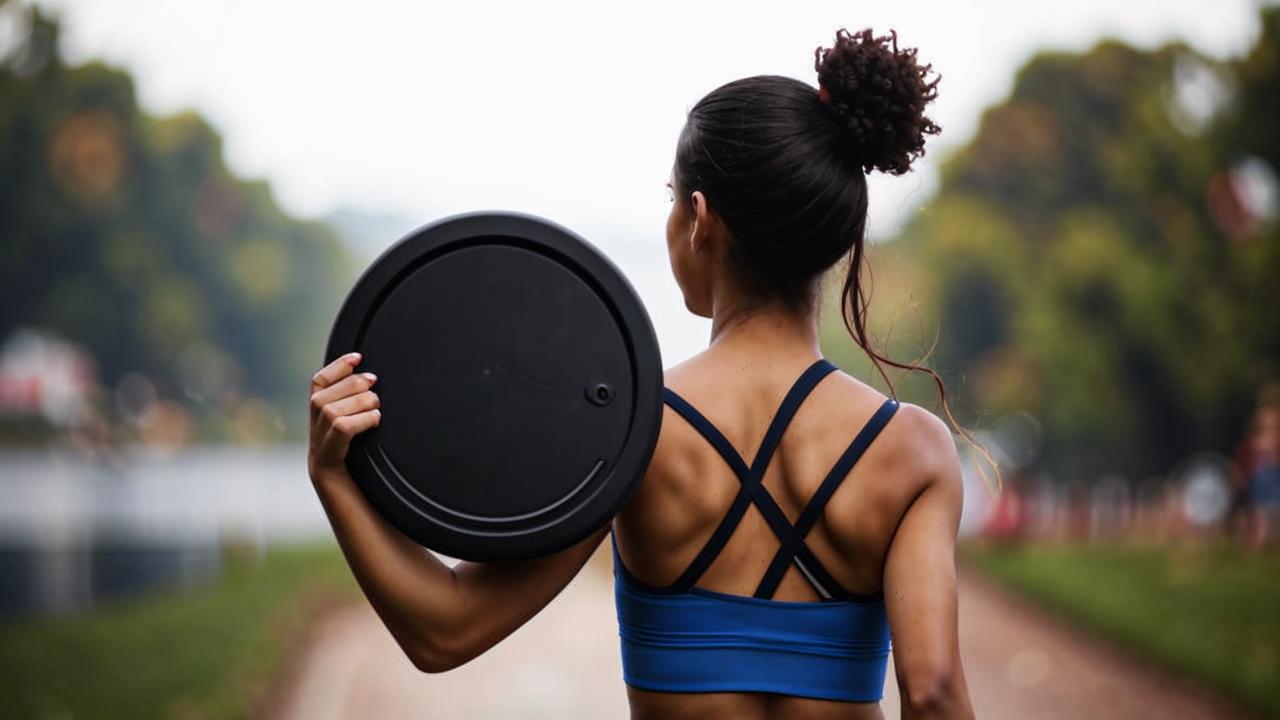Do you remember that unpleasant feeling after arm training, when it is hard to perform even habitual actions? Or maybe you suffer from neck, arm and shoulder pain after a day of working in an uncomfortable chair at the computer? Whatever the reason, the solution is the same – MFR training. This is not just rolling a ball or a roll around the body, but a whole complex of exercises aimed at point muscle work.

fitness trenér
“I want to share with you a set of exercises that will help relieve neck pain, tension in the shoulders and arms, reduce discomfort in the area between the shoulder blades, reduce swelling in the face area and improve muscle function during strength training.”
-
MFR for arms: why do you need it?
-
How to exercise?
MFR for arms: what is it for?
These three magic letters stand for “myofascial release”, in other words, self-massage. Myo is a muscle, and fascia is a film of collagen, elastin and connective tissue covering the muscle. That’s what they work on during MFR training.
What then is the connection between discomfort, swelling and lack of muscle tone and how all this can be affected by massage roll training, you may ask. And it won’t be hard for us to explain! MFR training helps to relieve tension, relaxing overstressed muscles. If this is not done, the movement of lymph and fluid outflow is impeded, and as a result, swellings are formed.
In case of weakened arm muscles, MFR helps to include them more effectively in strength work. This is due to the improvement of proprioreception, i.e. the feeling of body parts in relation to each other. Thanks to exercise, neuromuscular connections are better formed in the central nervous system.

How to practice?
For training you will need a massage ball, there are special ones for MFR, you can find them in sports stores or on marketplaces. There is also an alternative – a tennis ball, but you need to choose a ball that is not too soft. During exercise, the sensations should be acceptable, do not tolerate severe pain, reduce the intensity of the impact or move on to the next exercise. And it is very important not to hold your breath.

MFR of the upper trapezius
Technika
- Stand with your back to the wall, place the ball above the shoulder blade and rest against the wall.
- Roll the muscle along and across.
- Repeat on the other side.

MFR of the middle and lower parts of the trapezius
Technika
- Stand with your back against the wall, place the ball between your spine and shoulder blade.
- Bend your legs slightly at the knees, this will make it more comfortable to roll the ball, squatting a little and pushing yourself up, you will not have to stand on your toes at the top point.
- Roll the muscle with the ball up and down, along the spine.
- Repeat on the other side.

MFR of the scapular muscles
Technika
- Stand with your back to the wall, place the ball between the spine and scapula on the left side.
- Extend your left arm to the opposite shoulder and press it against you with your right hand.
- Feel the scapula moving away. Roll the ball through the space created.
- Repeat on the right side.
MFR of the deltoid muscles of the shoulder
Technika
- Stand sideways against the wall, place the ball on top of the shoulder.
- Roll the lateral surface of the shoulder. You can use right-left, up-down and circular movements.
- Stand with your back against a wall, with the ball also on the top of your shoulder.
- Roll the ball in all directions.
- Turn your back to the wall. Work the front surface of the shoulder as well.
- Repeat on the other side.

MFR of the sternoclavicular-papillary muscle
Technika
- Sit or lie down. Slightly tilt or turn your head and find the muscle that begins to attach from the clavicle and goes to the area behind the ear.
- Use the fingers of one hand to hold the base of the muscle.
- Using the fingers of your second hand, gently knead this muscle from bottom to top, smoothing it with the fingers of your upper hand.
- Repeat on the other side.

MFR of pectoral muscles
Technika
- Sit or stand, keep your back straight, take the ball in your left hand. The shoulder of the right arm is straight, do not turn it inward.
- Roll the ball over the right pectoral muscle (avoiding the mammary gland area), pressing down on the ball.
- Pay special attention and linger where there is discomfort.
- Breathing is calm, movements are performed smoothly, gently.
- Repeat on the left side.

Victoria Marakhovskaya: Those who spend a lot of time at the computer, working with the mouse, can develop tunnel syndrome. It is characterized by numbness of the fingers and accompanied by pain in the wrist joint, due to compression of the nerve between the muscles and tendons. In such a case, I advise you to use a vertical mouse, which eliminates the twisting of the forearm bones, reduces muscle tension and pressure on the nerve endings.
Forearm MFR with a ball
Technika
- You will need a ball, here you can take a smaller and more textured, and a hard horizontal surface, such as a table.
- Sit next to the table and place the ball on it.
- Roll your forearm (from wrist to elbow), apply a little pressure to the ball.
- Then place the ball on the front of your forearm, roll this area, pressing lightly on the ball.
- Repeat for the other arm.

Do this set of exercises before training, between work or in the morning. And very soon you will notice the result, feel lightness in your arms and shoulder girdle. Take care of your body, and it will not stay in debt.






